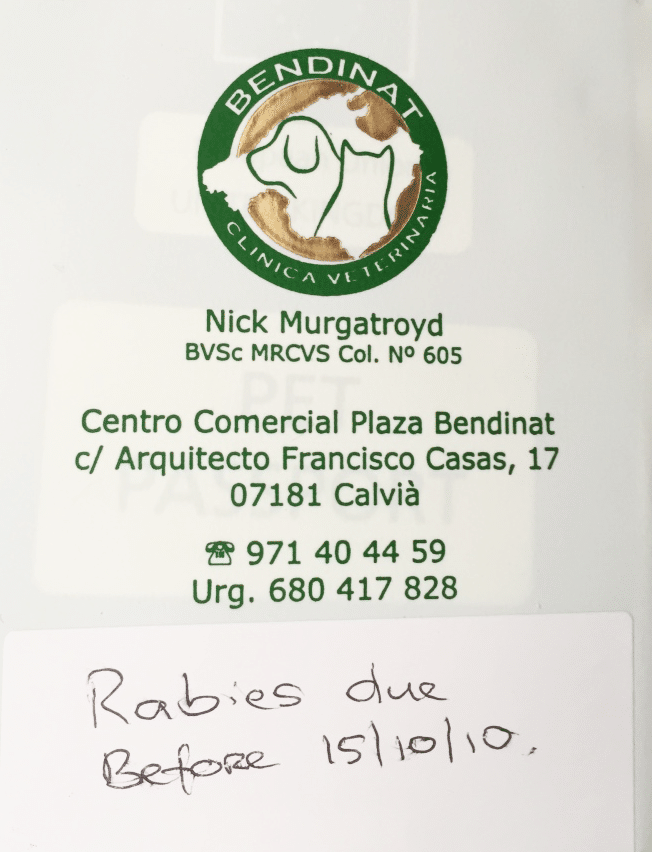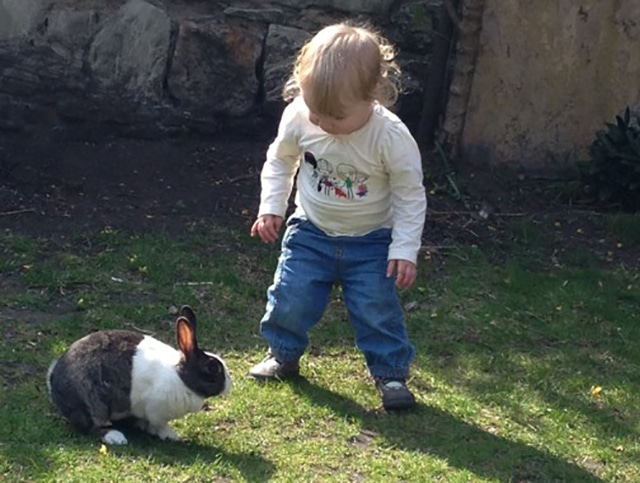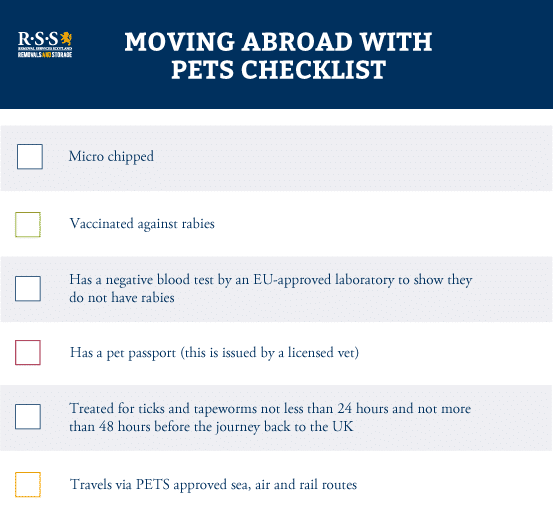When moving abroad with pets. Top Hollywood actor Johnny Depp and his wife Amber Heard were forced to make a very public apology after being caught smuggling their dogs into Australia. Amber flew Yorkshire Terriers Pistol and Boo to Queensland in a private jet to visit her husband. He was filming Pirate of the Caribbean: Dead Men Tell No Tales. The animals should have been declared on an immigration form before spending 10 days in quarantine. But the celebrity pair were told they had to make a public apology rather than being sent to jail for 10 years for flouting Australia’s tough animal quarantine laws. This is an extreme example of what can happen when pets are taken to foreign countries without following the proper protocol.
If the paperwork is in order, there is no reason why much-loved animals cannot be taken to many countries across the world. A comforting fact for people planning to move overseas.
Before travelling to/from the UK you need to make sure your dog is:
• Micro chipped
• Vaccinated against rabies: please note that you will need to plan at least 7 months in advance for a recently vaccinated dog to travel
• Has a negative blood test by an EU-approved laboratory to show they do not have rabies
• Has a pet passport (this is issued by a licensed vet)
• Treated for ticks and tapeworms not less than 24 hours and not more than 48 hours before the journey back to the UK
• Travels via PETS approved sea, air and rail routes
Download our ‘Moving abroad with pets checklist‘ here!
One example of a family who took their beloved pet, a Bernese mountain dog, for a foreign adventure is the Wright family. Wanting to inject some sunshine into their lives, Ian, who owns RSS, his wife, Diane, and their two boys, decided to move from their home in North Berwick, Scotland, to a house in Majorca for six months. And leaving their giant-sized canine Bernie behind was never an option.

“He was such an important part of the family – he had to come,” said Diane. As well as packing up the family home, Diane had to organise a Pet Passport through her local vet – to ensure he ticked all the right boxes, including an all-important rabies injection.

Then she had to make travel arrangements to have Bernie flown to Majorca in a crate.
“We were told that this was the least stressful way for him. He was in a cosy place with food and water and a rug draped over the cage to make him feel secure,” Diane added. And when they collected him the other end – he was overjoyed to see them.
“We flew out there on one plane with Bernie on a later plane. When we went to collect him from the cargo area he was being lifted down on a fork-lift truck and was so excited he jumped around to the point the cage almost toppled over,” she said. And once he arrived in Majorca, he made the house feel like a home.
“With him there, our family felt complete,” Diane added.
Another jet-setting pet-loving family are the Kerrs. They divide their time between their house in East Saltoun in East Lothian and Europe – and always take their dog with them. The couple, Andrene, 64, and Gordon, 66, recently moved their overseas home from the Algarve in Portugal to France. They asked RSS to give them a hand transporting furniture – as well as their four-legged friend, Tibbie, a one-year-old Tibetan Spaniel.

Now the couple travel between homes taking a ferry across the channel – and say the journey couldn’t be easier.
“They have pet-friendly cabins which even give you a ‘welcome pack’ for pets,” said Andrene. Once she put her paws up in her new overseas home in Civray, near Bordeaux, in western France, Tibbie was out making friends.
“Moving to a new place with a dog means you meet people all the time. It’s a real conversation starter,” added Andrene. “We couldn’t imagine being here without her.”
However, for some families, taking a pet to a new home is just not an option. Take the Sangster family – who inherited a flop-eared bunny called Juicy from a friend who was moving from Edinburgh to America. Katherine Sangster, a project management consultant, took the rabbit with a penchant for eating plants, when they were living in a house in Joppa. Katherine, who has four children, twin girls Kitty and Lizzie and boys, Harry and Archie, said Juicy was a great addition.

“We had a large back garden and she would spend the days hopping around, nibbling as she went,” she said. “The kids thought she was great fun – and she really became part of the family.”
However, the Sangsters were forced to re-home their furry friend after they moved to a more modern house in Inveresk, near Musselburgh.
“Our new garden had a wire fence and was surrounded by fields. Juicy had started to go blind – and we worried about foxes so we realised it wasn’t going to work,” she said. But homing the aging bunny was harder that she thought.
“You would have thought something as cute and small as a bunny would be easy to find a new home for,” she said.
However, a rabbit sanctuary they thought would take their pet in said they were full. “We did have a dilemma – it was getting nearer and nearer to our moving date and we still hadn’t found her a new home,” said Kath. Luckily a friend in Kath’s book group asked her sister to help out.
Now Juicy is enjoying her new life in the lap of luxury as a house rabbit. The Scottish SPCA said that not being able to take animals into a new home was a common problem.
Superintendent Sharon Comrie said, “We receive many calls every day from owners looking to give up their pets, with one of the most common reasons being they are moving into rented accommodation where they aren’t allowed animals.”
She added: “We will always help where possible when owners are no longer able to look after their pets if we have space available and regularly do so, although there is often a waiting list and our main priority is to provide refuge and shelter for the abandoned, neglected and ill-treated animals we rescue.”
Taking your pet overseas to other EU countries is now possible without months of quarantine. The pets travel scheme, known as PETS for short, permits pets to travel with you subject to certain conditions.
Glen Watson, director at Links Veterinary Group, which has practices throughout East Lothian in Scotland, said it was vital to plan ahead when taking a dog abroad. He also pointed out that a family looking to take a recently rabies-vaccinated dog abroad needed to plan at least 7 months ahead if they were only going away for a few months. He said: “Your pet may not re-enter the UK until 6 calendar months have passed from the date of a negative rabies blood test.
“In other words, you have to go to your vet for the pet passport, microchip and rabies vaccination, then again to get the blood test done (this is usually 2 weeks after the vaccination). Then you will have to wait 6 months before you can bring your dog back into the UK. This means you need to plan a minimum of 7 months in advance of your travel – taking your pet outside the UK isn’t a problem but bringing them back in might be!” He also said that when taking a dog to a country outside the EU, it was vital to check with the relevant Embassy for the latest rules.
Finally, become familiar with the Pets Travel Scheme, which is the system that allows UK residents to take animals abroad. The scheme was introduced in 2000 and has helped provide more control around the import/export of animals.
Dogs, cats and pet ferrets entering the UK from an EU or ‘listed’ third country from 1st January 2012 must: have completed the following in this exact order:
- Be microchipped
- Vaccinated against rabies
- Have waited 21 days after vaccination before entering the UK
- Hold an EU Pet Passport or EU Veterinary Certificate
- Tapeworm Treatment(dogs only)










